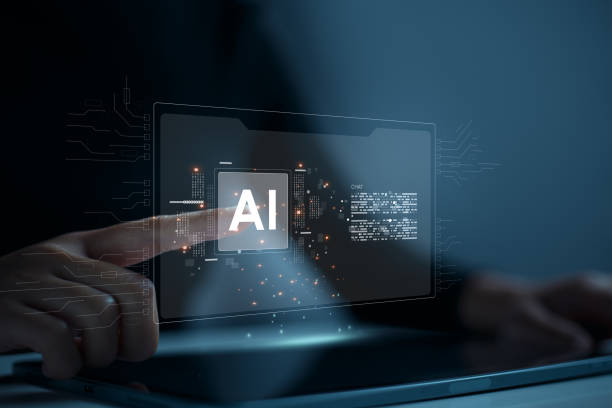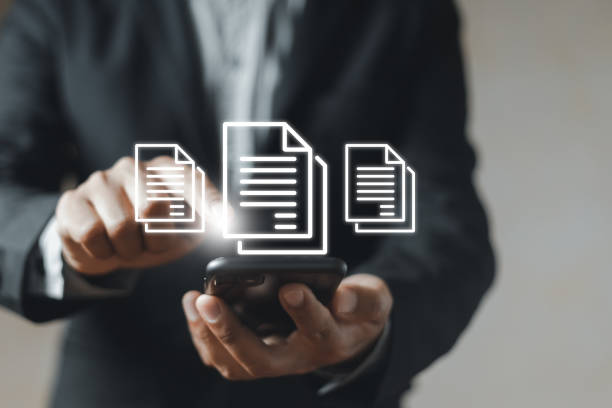Introduction to On-Page SEO and Its Importance in Website Success
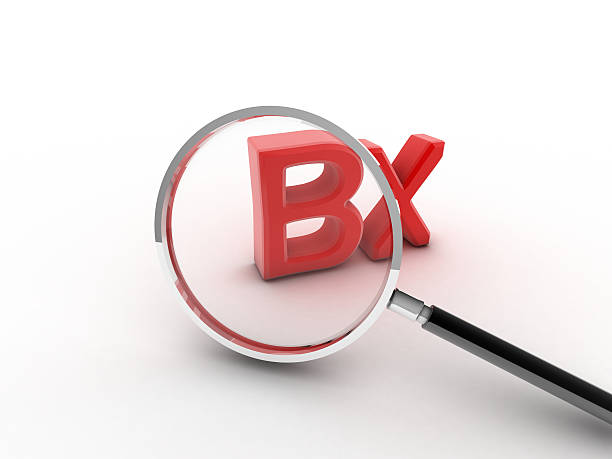
In today’s highly competitive web world, the success of a website is not limited to quality content alone.
One of the most fundamental pillars for achieving visibility and attracting an audience is #On-page_SEO.
This process involves optimizing various elements within a website so that search engines can better understand it and correctly index its content.
The main goal of on-page SEO is to improve #website_page_rankings in search results and ultimately increase #organic_traffic.
These optimizations include elements such as keywords, URL structure, title tags, meta descriptions, image optimization, and internal link structure.
Imagine your website as a large library; on-page SEO is like meticulously organizing shelves, correctly labeling books, and creating a comprehensive catalog that allows every visitor to easily find the book they are looking for.
Without strong on-page SEO, even the best content might get lost amidst the vast amount of internet information and never be discovered by the target audience.
Therefore, mastering the principles of on-page SEO is an explanatory and vital matter for any webmaster or digital marketer.
Do visitors leave your e-commerce site before making a purchase? Don’t worry anymore! With Rasaweb’s professional e-commerce website design services, solve the problem of converting visitors into customers forever!
✅ Significant increase in conversion rates and sales
✅ Unique and engaging user experience
⚡ Contact us now for a free consultation!
Keyword Research for Effective and Targeted On-Page SEO
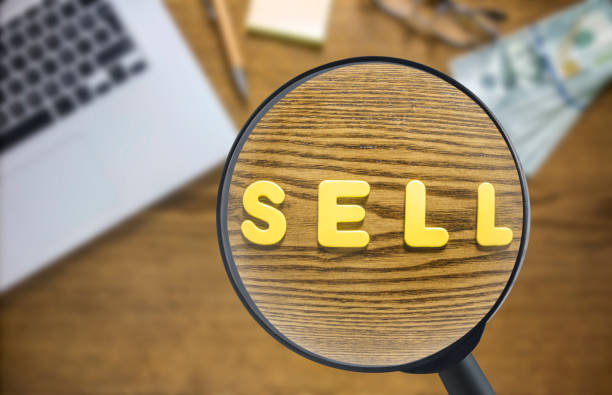
Keyword research is the cornerstone of any successful on-page SEO strategy and an important part of the educational process in this field.
This process involves identifying phrases and words that your target audience types into search engines to find products, services, or information similar to what you offer.
The goal of this research is to find keywords with suitable search volume and reasonable competition that can drive quality traffic to your site.
Tools like Google Keyword Planner, Ahrefs, Semrush, and Moz Keyword Explorer can be of great help in this regard.
For on-page SEO, not only main keywords (head terms) but also long-tail keywords are of high importance.
Long-tail keywords are more specific and usually better indicate the searcher’s intent, which can lead to higher conversion rates.
As a guidance, try to find keywords related to user intent; is the user looking for information (informational), intending to buy (transactional), or looking for a specific website (navigational)? Understanding these differences helps you optimize your content to precisely answer the user’s need, and as a result, achieve a better ranking in search results for on-page SEO.
Content Optimization for Advanced On-Page SEO
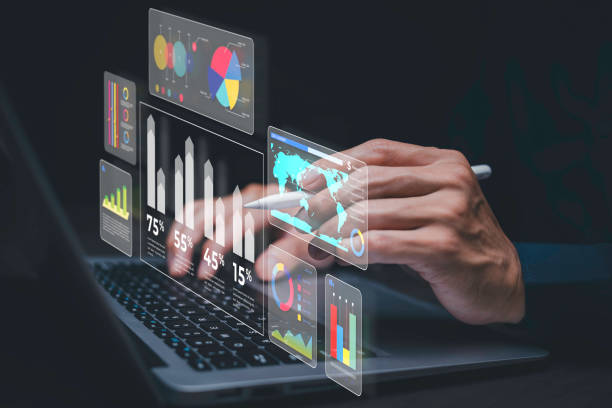
Content optimization is one of the specialized and analytical stages in on-page SEO that goes beyond simply placing keywords in the text.
This involves creating content that is not only appealing to search engines but also valuable and readable for users.
Your content should be deep, comprehensive, and unique, answering users’ questions in the best possible way.
Using relevant keywords and synonyms (LSI Keywords) helps search engines better understand the main topic of your content.
Also, structuring content using logical headings (H1-H6), short paragraphs, bulleted lists, and relevant images significantly increases readability.
Readability not only improves user experience but can also affect your ranking, as search engines increasingly value user interaction with content.
This part of on-page SEO requires precision and attention to detail.
Below is a guide table for content optimization:
| Element | Description | Importance (1 to 5) |
|---|---|---|
| Main keyword in title | Using the target keyword in the title tag (H1) | 5 |
| Keyword density | Natural distribution of keywords throughout the text (not excessive) | 3 |
| Use of LSI Keywords | Semantically related keywords for content richness | 4 |
| Content readability | Using short paragraphs, headings, and lists | 5 |
| Content length | Comprehensive and complete content that covers all aspects of the topic | 4 |
Important HTML Tags in On-Page SEO for Better Search Engine Understanding
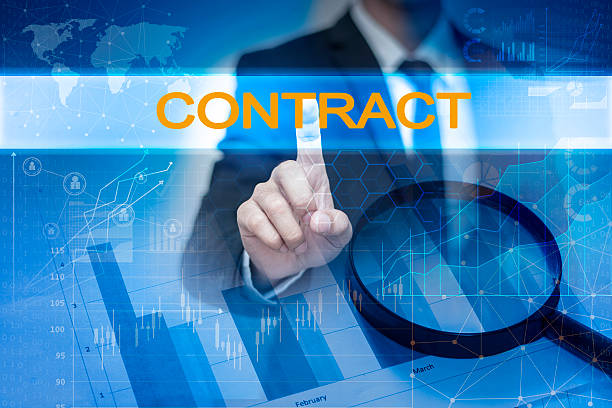
HTML tags play a crucial role in guiding search engines to understand the structure and topic of a web page.
Optimizing these tags is one of the basic principles of on-page SEO and has an explanatory and guidance nature.
Title Tag, one of the most important elements, directly affects ranking and click-through rate (CTR).
This tag should include the page’s main keyword and be a maximum of 60 characters long to be fully displayed in search results.
Meta Description, although it does not directly affect ranking, acts as a “small advertisement” in search results and can encourage users to click.
These descriptions should be engaging and include relevant keywords, with a maximum length of 160 characters.
Header Tags from H1 to H6 specify the hierarchical structure of the content.
H1 is the most important heading and should include the main keyword, while H2 to H6 are used for subheadings and organizing content.
Correct use of these tags not only helps search engines understand the page structure but also improves content readability for users.
Also, Alt tag for images is vital.
This tag provides a short description of the image content and helps search engines index images.
Overall, precise optimization of these HTML tags is an integral part of a comprehensive on-page SEO strategy.
Do you have an e-commerce site but your sales are not as expected? Rasaweb solves your problem forever with professional e-commerce website design!
✅ Significant increase in conversion rates and sales
✅ Unique user experience for your customers
⚡ Click here for a free consultation with Rasaweb!
Importance of Loading Speed and User Experience in On-Page SEO
![]()
In recent years, search engines, especially Google, have heavily focused on User Experience (UX) and page loading speed.
This topic is an important analytical and explanatory aspect in on-page SEO.
High loading speed is not only a direct ranking factor but also indirectly affects metrics such as Bounce Rate and user time on site.
A slow website can drive users away and send negative signals to search engines.
Google’s Core Web Vitals metrics, such as LCP (Largest Contentful Paint), FID (First Input Delay), and CLS (Cumulative Layout Shift) are key indicators for measuring user experience.
Image optimization, code compression (CSS, JavaScript), use of CDN (Content Delivery Network), and choosing suitable hosting are among the actions that can improve site speed.
Improving user experience goes beyond loading speed and includes responsive design, easy navigation, organized content, and attractive visual design.
A site that provides a good user experience will have a higher engagement rate, and this will positively affect its ranking in search results for on-page SEO.
Remember, the ultimate goal of search engines is to provide the best experience to users, and websites that meet this goal will be rewarded.
URL Structure and Internal Linking for Optimal On-Page SEO
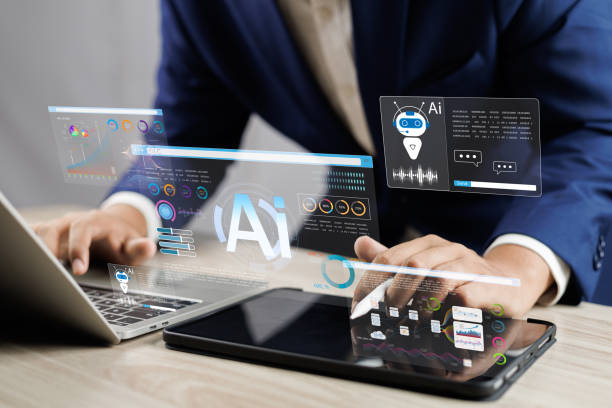
URL structure and internal linking are two crucial elements in on-page SEO that are often overlooked, yet play a significant role in helping search engines understand site structure and page value.
This section is educational and guidance.
Your URL structure should be short, descriptive, and include the page’s main keyword.
Clean and readable URLs are not only more appealing to users but also help search engines quickly identify the page’s topic.
Avoiding numbers, irrelevant characters, and very long URLs are some of the points to observe.
For example, instead of yoursite.com/cat?id=123&type=shoes, use yoursite.com/shoes/running-shoes.
Internal linking means creating links between different pages of your website.
This has several benefits for on-page SEO: First, it helps search engines discover and index all your site’s pages.
Second, it distributes ranking value (Link Equity) across the site, meaning powerful pages can help improve the ranking of other pages.
Third, it improves user experience and helps users discover more relevant content.
When internal linking, use descriptive and keyword-rich anchor text.
Avoid linking to irrelevant pages and ensure links point to more important pages of your site.
A strong internal linking strategy can significantly impact your site’s overall ranking.
Optimizing Images and Videos for On-Page SEO
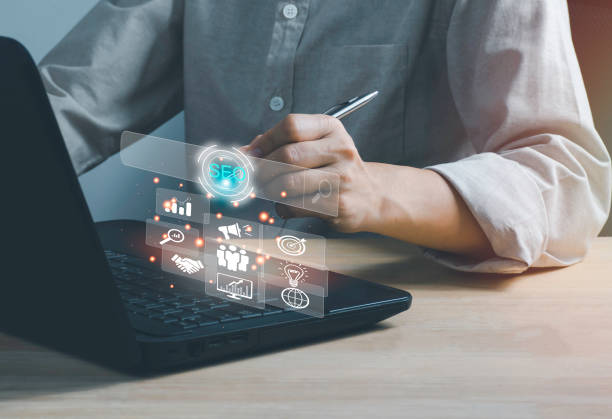
In today’s world, where visual content reigns supreme, optimizing images and videos is an integral part of an on-page SEO strategy.
This is a specialized and guidance aspect that can significantly impact loading speed and the discoverability of your content by search engines.
Image optimization includes several key steps: compressing images to reduce file size without losing quality, using descriptive Alt Text that includes keywords, naming image files meaningfully, and using optimized image formats (such as WebP).
Alt text not only helps search engines understand image content but is also beneficial for visually impaired users or those whose images fail to load.
For videos, optimization includes: creating a Video Sitemap, using Video Schema Markup for better display in search results, creating an engaging title and description for the video that includes keywords, and ensuring video responsiveness across different devices.
Also, adding a transcript or subtitles to videos can help search engines index the spoken content of the video and expand the range of keywords related to your video.
These comprehensive measures not only improve user experience but also provide new opportunities for ranking in image and video search for on-page SEO.
Below is a guide table for image optimization:
| Optimization Factor | Why it’s important? | How to implement |
|---|---|---|
| File size (compression) | Increases page loading speed | Use compression tools like TinyPNG or web plugins |
| Alt Text | Helps search engines and visually impaired individuals understand the image | Descriptive, content-related, and keyword-inclusive |
| Image file name | A signal to search engines about the image content | Descriptive and relevant names (e.g., “nike-running-shoe.jpg”) |
| Image format | Affects quality and file size | WebP for web images, JPEG for photos, PNG for transparency |
Technical On-Page SEO Plays a Vital Role in Website Ranking and Indexing
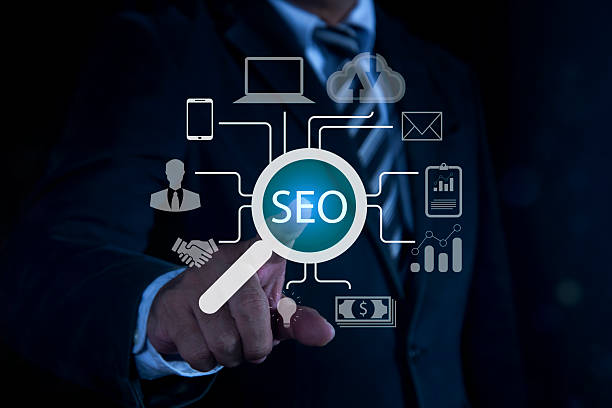
Technical On-Page SEO refers to the technical aspects of a website that affect how search engines crawl and index the site.
This is an analytical and explanatory area that strengthens the SEO infrastructure.
Although this section is not visible to users, it is crucial for your website’s discoverability by search engines.
One of the most important elements is Schema Markup or structured data.
These codes help search engines better understand your page content and display it as Rich Snippets in search results, which can significantly increase click-through rates.
Canonical tags are used to prevent duplicate content issues.
This tag tells search engines which version of a page is the original and indexable one.
The robots.txt file instructs search engines which parts of your site to crawl and which to ignore, while the XML Sitemap (Sitemap.xml) provides a list of all important pages on your site to search engines to ensure no page is missed.
Optimizing these technical aspects is essential for a comprehensive on-page SEO strategy and allows search engines to process your site more efficiently, which ultimately contributes significantly to improving your ranking.
Is your current e-commerce website not bringing you the expected sales?
Rasaweb is an expert in professional e-commerce website design!
✅ An attractive and user-friendly site aimed at increasing sales
✅ High speed and security for an ideal shopping experience⚡ Get a free consultation on online store design with Rasaweb!
Common Challenges and Solutions in On-Page SEO
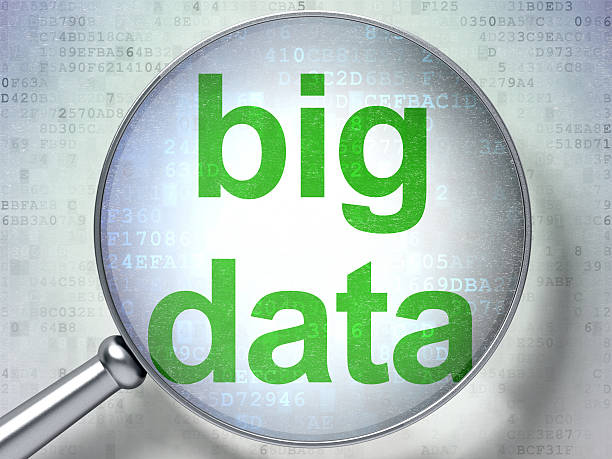
Like any other field in digital marketing, on-page SEO faces its own challenges.
This section, in a thought-provoking and guidance manner, examines these challenges and provides practical solutions.
One of the most common issues is Duplicate Content, which can confuse search engines and harm your ranking.
Solutions include using Canonical tags, 301 redirects, and ensuring different versions of content are not indexed.
Another challenge is slow page loading speed, which can lead to high bounce rates and poor user experience.
To solve this problem, optimizing images, compressing code, using caching, and upgrading hosting are essential.
Improper use of keywords, such as keyword stuffing, not only sends negative signals to search engines but also reduces content readability.
The solution is to distribute keywords naturally and intelligently throughout the text and focus on content quality.
Broken links also disrupt user experience and reduce site credibility.
Tools like Google Search Console can help you identify and fix these links.
Finally, lack of mobile optimization is a serious mistake in today’s on-page SEO.
Ensuring responsive design and an efficient mobile experience for users is vital.
By identifying and addressing these challenges, the path for strong and effective on-page SEO can be paved, significantly improving website ranking.
Future of On-Page SEO and New Trends
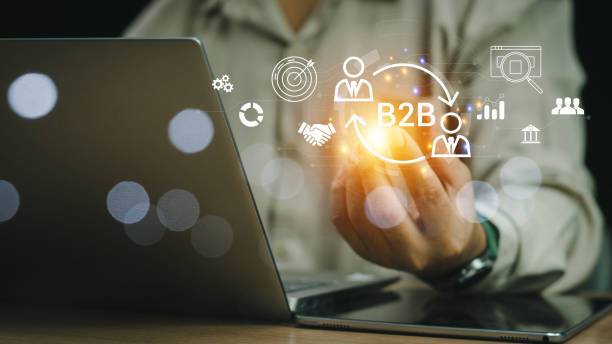
The world of on-page SEO is never static and is constantly evolving.
Understanding news-related and analytical aspects of future trends is essential for maintaining a competitive advantage.
One of the most important upcoming trends is the increasing role of Artificial Intelligence (AI) in search engine algorithms.
Algorithms like Google’s RankBrain, BERT, and MUM focus on a deeper understanding of user intent and semantic content.
This means that on-page SEO must go beyond mere keywords and focus on creating comprehensive content that answers complex user questions.
Voice Search is also becoming increasingly popular.
Optimizing for voice search includes using more natural and conversational keywords, directly answering questions, and focusing on long-tail and question-based keywords.
Focus on User Experience (UX) will also become even more important, with metrics like Core Web Vitals acting as direct ranking factors.
This means that site speed, visual stability, and page interactivity must be continuously monitored and improved.
Additionally, E-A-T (Expertise, Authoritativeness, Trustworthiness) will remain a critical factor for Google, especially in sensitive areas (YMYL – Your Money Your Life).
Ultimately, the future of on-page SEO lies in optimizing for human users, not just search engines; with quality content, excellent user experience, and adaptability to new technologies, one can succeed in this competitive path.
Frequently Asked Questions
| Question | Answer |
|---|---|
| What is On-page SEO? | On-page SEO refers to a set of actions performed within the website and on page content to achieve better rankings in search results. |
| Why is On-page SEO important for a website? | On-page SEO helps search engines better understand your page content and assess its importance. It also provides a better user experience for visitors. |
| What are the most important On-page SEO factors? | Key factors include keyword optimization, content quality, Title Tag, Meta Description, URL structure, Heading Tags (H1-H6), internal linking, and image optimization. |
| What role does the Title Tag play in On-page SEO? | The Title Tag is one of the most important on-page SEO factors that displays your page title in search results and browser tabs. It should be engaging and include the main keyword. |
| What is the importance of Meta Description in On-page SEO? | Meta Description provides a summary of the page content and, although it does not directly affect ranking, it can increase the Click-Through Rate (CTR) by enticing users to click. |
| How are keywords used in On-page SEO? | Keywords are phrases users employ to search for information in search engines. Proper and natural use of them in content helps the search engine identify the page’s topic. |
| What is internal linking and what is its benefit in On-page SEO? | Internal linking means creating links between different pages of a website. This helps distribute page authority, assists search bots in crawling, and improves user experience. |
| How does image optimization affect On-page SEO? | Image optimization includes compressing file size, using appropriate Alt tags, and proper file naming. This improves page loading speed and helps search engines understand image content. |
| What does quality content mean in On-page SEO? | Quality content means content that is comprehensive, accurate, unique, up-to-date, and user-friendly, and meets users’ needs. |
| What role does URL structure play in On-page SEO? | Readable, short URLs that include the main keyword help search engines and users better understand page content and improve user experience. |
And other services of Rasaweb advertising agency in the field of advertising
Smart Reportage: An exclusive service for increasing website traffic based on real data.
Smart Marketplace: An effective tool for analyzing customer behavior through user experience customization.
Smart Google Ads: A professional solution for customer acquisition with a focus on precise audience targeting.
Smart Digital Branding: An effective tool for digital branding through attractive user interface design.
Smart Reportage: A novel service for increasing user engagement through attractive user interface design.
And over hundreds of other services in the field of internet advertising, advertising consultation, and organizational solutions
Internet Advertising | Advertising Strategy | Advertorials
Resources
Iran Host Internal SEO Tips
What is On-Page SEO?
What is On-Page SEO? Host Negar
Parsian Host On-Page SEO Tutorial
? Are you ready to transform your business in the digital world? Rasaweb Afarin Digital Marketing Agency, offering comprehensive services including personal website design, SEO, and content marketing, provides innovative solutions for your growth and visibility.
📍 Tehran, Mirdamad Street, next to Central Bank, Southern Kazerun Alley, Ramin Alley No. 6


